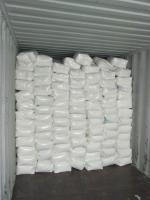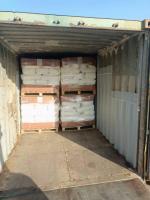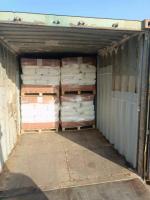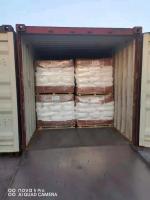Our Products
Polyacrylamide / Cationic polyacrylamide emulsion (FLOPAM EM640 CT) can be replaced by CHINAFLOC C6008

Cationic polyacrylamide emulsion (FLOPAM EM640 CT) can be replaced by CHINAFLOC C6008
FLOPAM EM640CT is a cationic polyacrylamide emulsion with very high ionic degree and relatively high molecular weight, mainly used in sewage treatment and sludge dewatering fields. The CHINAFLOC C6008 can completely replace FLOPAM EM640 CT and has good application performance.
Cationic polyacrylamide (APAM) is widely used in chemical industry wastewater, waste liquid treatment, municipal sewage treatment. Tap water industry, high turbidity water purification, sedimentation, coal washing, mineral processing, metallurgy, iron and steel industry, zinc, aluminum processing industry, electronic industry and other water treatment.
Cationic polyacrylamide (CPAM) appearance is white powder, ionic degree from 20% to 55% water solubility, can be dissolved in any proportion in water and insoluble in organic solvents. High polymer electrolyte, suitable for wastewater treatment with negative charge and rich organic matter. Suitable for dyeing, papermaking, food, construction, metallurgy, mineral processing, coal powder, oil field, aquatic processing and fermentation industries with higher organic colloid content of wastewater treatment, especially for municipal sewage, municipal sludge, papermaking sludge and other industrial sludge dewatering treatment.
PAM PAM consists of acrylamide (AM) monomers by free radical polymerization of water soluble linear polymer, insoluble in most organic solvents, has good flocculation sex, can reduce the friction resistance between liquid, by ion characteristic points can be divided into non-ionic and anionic, cationic and amphoteric four types.
Cationic polyacrylamide (CPAM) properties
Cationic polyacrylamide (CPAM) appearance is white powder, ionic degree from 20% to 55% water solubility, can be dissolved in any proportion in water and insoluble in organic solvents. High polymer electrolyte, suitable for wastewater treatment with negative charge and rich organic matter. Suitable for dyeing, papermaking, food, construction, metallurgy, mineral processing, coal powder, oil field, aquatic processing and fermentation industries with higher organic colloid content of wastewater treatment, especially for municipal sewage, municipal sludge, papermaking sludge and other industrial sludge dewatering treatment.
PAM PAM consists of acrylamide (AM) monomers by free radical polymerization of water soluble linear polymer, insoluble in most organic solvents, has good flocculation sex, can reduce the friction resistance between liquid, by ion characteristic points can be divided into non-ionic and anionic, cationic and amphoteric four types.
Polyacrylamide mesh
Mesh refers to the particle size or fineness of the material, mesh is the number of squares per unit area. The general definition refers to the number of meshes in an area of 1 inch *1 inch, that is, the number of meshes of the screen. Such as 600 mesh is 600 square mesh per square inch, polyacrylamide mesh 20 ~80 mesh, that is, between 0.85mm~0.2mm, this is the mesh size of granular polyacrylamide, powder polyacrylamide mesh size can be controlled in about 100 mesh, the larger the polyacrylamide is more easily dissolved, The size of polyacrylamide mesh alone is unable to measure the quality of the product!
Polyacrylamide (PAM) is a water-soluble polymer, insoluble in most organic solvents, with good flocculation, can reduce friction resistance between liquids. With the continuous expansion of China's polyacrylamide (PAM) industry demand market and export growth, China's polyacrylamide (PAM) industry operation ushered in a new development opportunity.
Cationic polyacrylamide method of use
1. Dissolution method
Before use, the solid particles should be dissolved into an aqueous solution with a concentration of 1‰- -5‰, so as to play an effective role quickly.
In dosing, should take a gradual way of medicine, slowly into the water, then evenly dispersed in the water, dissolved.
2, the addition of solution
The aqueous solution of about 0.5‰- -1‰ is usually added, but in the case of high concentration and high viscosity of suspension, it is recommended to dilute the aqueous solution further to 0.1‰, so that it will be easy to mix and give full play to the effect.
3, cationic cationic polyacrylamide is lower than anionic cationic polyacrylamide molecular weight and viscosity is weaker than anion, so cation, non-ionic ratio concentration standard is slightly higher than anion.(depending on the situation, the same can be adjusted according to the concentration of water turbidity is high, low concentration. Low turbidity can be increased by appropriate concentration). The recommended concentration is 5‰--1%.
Cationic polyacrylamide use matters needing attention
1, the size of flocs: flocs too small will affect the speed of drainage, flocs too large so that flocs bind more water and reduce the mud biscuit degree. After choosing the molecular weight of polyacrylamide can adjust the size of the floc;
2, sludge characteristics: a point to understand the source of sludge, characteristics and composition, proportion. According to different properties, sludge can be divided into organic and inorganic sludge. Cationic polyacrylamide for the disposal of organic sludge, relative anionic polyacrylamide flocculant for inorganic sludge, alkaline strong with cationic polyacrylamide, and strong acid should not be used anionic polyacrylamide, high solid content of sludge usually polyacrylamide dosage is also large;
3, flocs strength: flocs should be stable and not broken under shear action. Improving the molecular weight of polyacrylamide or choosing suitable molecular structure is helpful to improve the stability of polyacrylamide.
4, polyacrylamide ionic degree: for dehydrated sludge, can use different ionic degree of flocculant after doing the first test selection, select the appropriate polyacrylamide, so that can get very good flocculant effect, and can make the dosage is less, save money;
5, the dissolution of polyacrylamide: good solution to give full play to flocculation. Sometimes the need to accelerate the dissolution rate, then you can think of improving the concentration of polyacrylamide solution.





